Our Processes
Our orchards
The muisca orchards are processes that arise due to the necessity return to our ancient traditions as agriculturists, since the grandparents were who have left this legacy. Creating a link between Mother Earth and us. Thanks to her, we have harvested the produce from the land which have served as source of food security for the community and others abroad. For that reason, we constantly live in respect and gratitude.
So as to, different families that attend to the orchards must do an isolation fulfilling the next schedule: On February 2nd, the blessing of seeds takes place, it consists in making a ceremony with our knowledgeable individuals accompanied with the medicine Osca, there the spoken word is shared and the seeds that are chosen will be sown and blessed; from March 21st to June 21st, the seeds are sown both physically and spiritually; from June 21st to September 21st, Weed control is done, and nutrients are added, providing strength to the crops; from November 4th to December 21st, the crops are picked up and it’s made an appreciation to Mother Earth; from December 21st to January 21st starts the time without time, where the land is left to rest, gaining strength and nutrients to be ready for planting again next year.
It’s important to highlight that as well as our ancestors, we make use of lunar phases too, since they told us that the moon affected the production of crops where plants grow in a natural way without the necessity of chemicals. Therefore, it’s important to the muisca orchards to use organic matter in order to make compost and fungicides to the development of plants and thus, obtain organic food that contributes to the healthy diet of people.
Nowadays, Cabildo has three orchards located inside the ancestral indigenous territory of Bosa, registered within the directory of urban orchards of Bogotá. Where people ask for their healthy products, from the orchard to the dining table of each home. It’s worth noting that they have participated in the Jizca Chua Zhue Festival, carried out by the Cabildo Indígena Mhuysqa de Bosa with the final purpose of offering the sown products to those families from the community and who have last names such as Orobajo, Chiguasuque, Neuta, Fitata, Tunjo, Cobos, González, among others. The orchards were called ATA, BOZA and MICA, names taken from the muisca numerology 1,2 and 3 respectively, which are described below:
ATA Orchard
In the beginnings was directed by the indigenous elder women who with their great wisdom and love about plants, left us big lessons, they grew aromatic and medicinal plants, among them, sacred plants such as tobacco, tijiqui, and hosca plants that are used for the care of the orchard and still continue being cultivated. Medicinal plants that are grown there, are useful for traditional doctors in processes for the spiritual and physical healing of people. ATA is considered currently as the principal orchard of the Cabildo Indígena Muisca de Bosa, so there it is where people who attended, started the pathway to strengthen the other orchards. Finally, it’s made a recognizement to the elder women Fidelina Neuta y Silvia Chiguasuque, who left their knowledge to the different families of the community.

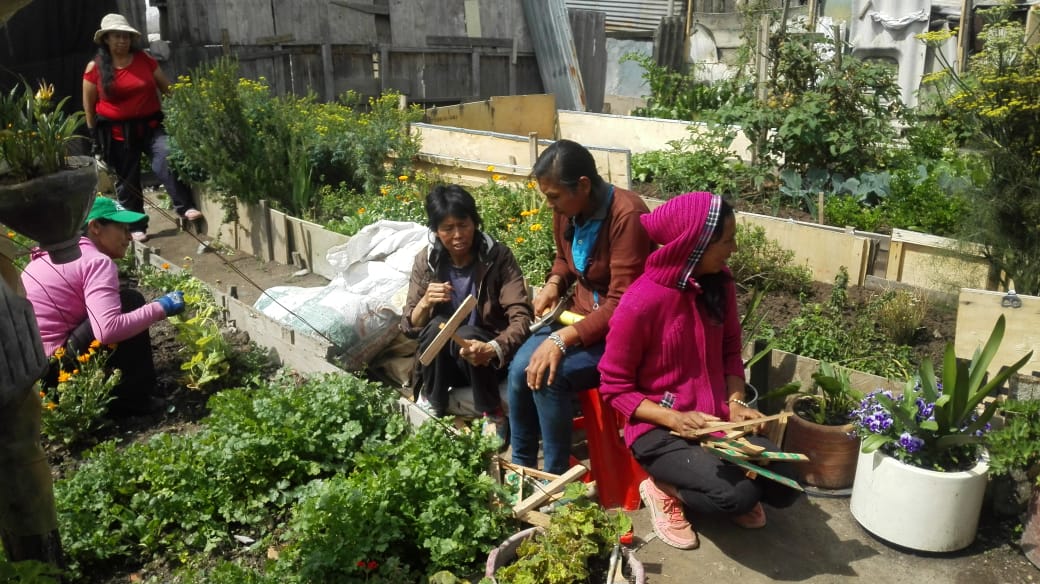
Boza Orchard
This orchard started in the year 2016, it’s directed by the the leader Alcira Neuta, who realized of the necessity of making use of her land as well as sharing with other families the knowledge that her parents taught her. Firstly, the construction of the orchard begins by buying: black soil, boards, nets, seeds and seedlings. They were formed working groups with different familiar nucleus that assist there every 8 days for 2 hours and where different vegetables are sown such as cauliflower, broccoli, spinach, lettuce, celery and so on. This orchard has the support of the Jardín Botánico, who contributes with materials and supplies, moreover, has the support of students from different universities which consider this as a lovely task and have wanted to be part of this process. Products from this orchard have been commercialized in different farmer market fairs.
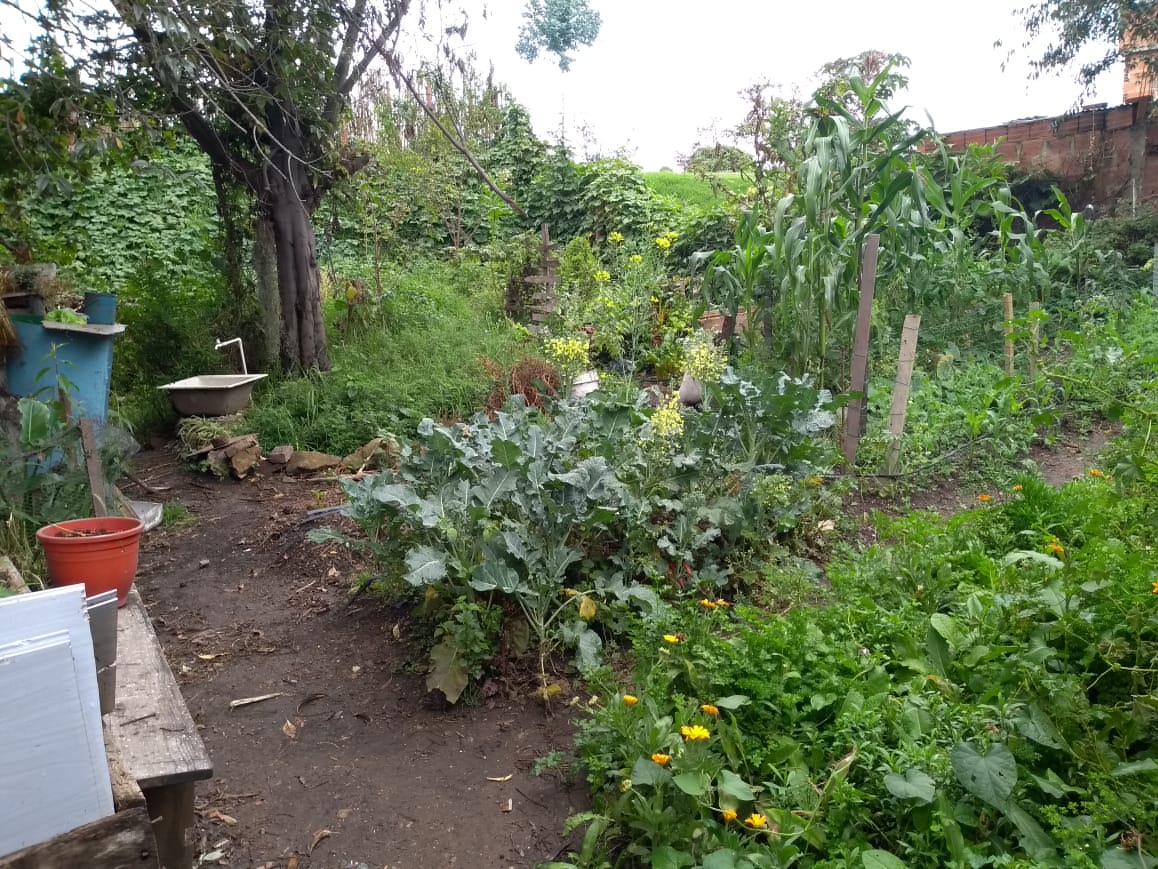
Mica Orchard
This orchard has began in November 2015, it’s directed by the leader Martha Orobajo, it’s found at the edges of the Tunjuelito River in the neighborhood Bosa La Paz, there women, kids and youth from the community engage with great interest arriving to the orchard on Saturdays, from 6 to 8 in the morning. They are made strengthening of agricultural processes such as composting, weeding, earthing up, making of insecticide, planting of seedlings; parsley, squash, cilantro, corn, curuba, blackberry, pea, habichuela (green bean), chives, gulupas, among others are grown there. It is irrigated through a clean water system which was donated by PAVCO foundation. Their different products have been commercialized in the farmer market fairs in places like Jardín Botánico, La Plaza de los Artesanos and Corferias. In addition to the above, the orchard has been recognized by communication media such as Canal Caracol, Canal Capital and El Tiempo newspaper, who give us the award as muisca indigenous peoples and environmental carers.
Women Weavers
Bakia, we are born due to the interest of traditional authorities so that the community appropriates slightly more about their traditions and customs.
There, 22 women interested in weaving joined together to weave memories through this tradition. Remembering and learning how the elder women from our community did it, but also with the help of the knowledgeable Yamile Chiguasuque, who is the one that delivered her spoken word and knowledge to us in order to have bases in this process. Starting with embroidery, we began to form this group where several figures and techniques of embroidery were learned for instance, crochet, to weave backpacks, macramé, embroidery with its different stitches in order to capture in our clothes the visual languages that identify us as muiscas, besides, costume jewelry or handmade jewelry that we learned with SENA in order to involve ourselves from undertaking as artisans and people know our process, thus, we were in different fairs accompanied by the rest of the community so that people abroad were be able to know about our process and work.
From all techniques learned, we lean more towards embroidery and handmade jewelry without forgetting the other techniques. We started to make embroidered placemats, cushions for the living rooms, embroidered handcrafted bags, necklaces, earrings, beanies, ruanas, scarves and bracelets and so on.
We came up with the purpose of learning from weaving. Today we are women motivated to teach more women and share with you our wonderful weavings which make part of our identity and voice as the women of the Mhuisqa de Bozha community.

.
This orchard started in the year 2016, it’s directed by the the leader Alcira Neuta, who realized of the necessity of making use of her land as well as sharing with other families the knowledge that her parents taught her. Firstly, the construction of the orchard begins by buying: black soil, boards, nets, seeds and seedlings. They were formed working groups with different familiar nucleus that assist there every 8 days for 2 hours and where different vegetables are sown such as cauliflower, broccoli, spinach, lettuce, celery and so on. This orchard has the support of the Jardín Botánico, who contributes with materials and supplies, moreover, has the support of students from different universities which consider this as a lovely task and have wanted to be part of this process. Products from this orchard have been commercialized in different farmer market fairs.
Furas
The group was born as an idea in a Basket workshop, where several knowledge were shared with people who knew about crochet needle weaving, thus, women of different ages participated forming just one weaving united group.
Over time we had been integrating ourselves together and making relationships with more people from the community, putting in practice the traditions and customs, those ones came up by the interests and likes of weaving. In this process of sharing, one girl student of Universidad Jorge Tadeo found this issue interesting, therefore, we brought her our knowledge which she uses in her thesis, this paper is also possible to find in the Cabildo building.
We met with the grandmother and elder woman Lourdes from the Muisca de Sesquilé community, exchanging knowledge on how to shear sheep step by step and paint them. We also discussed the elaboration of traditional clothing, where some women could recall and share their experiences thanks to the knowledge passed down by their parents or grandparents.
In support by David Castaño, we worked in order to be able to make craftworks of Colombia where we learned several things that had been integrating to our products and productivity, such as sewing and embroidery of indigenous garments, budgets, control and quality; one clear example is the design of Muisca handcrafted bags which we showed in several fairs such as: Bogotá Artesanal Emprendedora (Bogotá Artisan Entrepreneurial and Creative), Expo-Artesanias that were carried out every end of the year, among others which were organized and managed by the Cabildo and with the governance of Cundinamarca, el Parlamento Andino (Andean Parley) and Secretaría de Desarrollo Económico (Economic Development Secretary).
We keep making weaves as we do in our tradition, sharing and passing them down to those who also like this and are interested in weaving. In addition, the members of this group also participate within the community as their own dancing group which is called Furas.
Women Elders
We are legacy, wisdom and the living component of the culture from the Mhuysca indigenous community, with ancestral thinking. We are children of the sun, the water, the land and the air, of everything that is physical and spiritual, looking for the positive transformation of our generations, passing down and spreading teachings, own knowledge and lessons through the honesty and the truth, that generation by generation have been passing down in our homes, community and territory.
The women elder group was born about the years 2000-2001 as strengthening to the organizational process from the Cabildo with focus in the recognizement of traditional and ancestral medicine, taking into account the uses, customs, ideology, theology, and why not saying from their religion, teached and spreaded from within the family. Hence this group has always wanted to examine closely the knowledge, wisdom and practices that from their families and ancestors, they have conveyed along the journey/walking of life.
Firstly, the group was called El grupo de los Tunjo in honor to the different apparitions, myths and legends which were told and revolved around the territory with its own diverse wealth both physical and spiritual and of course the surname what is carried in the community. Moreover, they made reference to that surname as one that makes them feel vigor, strength and credibility. The group has always been very participative since the women elders are as a matter of fact who have been in the different local, distrital and even international places in topic such as rituals, pagamento (thanksgiving/gratitude to the Mother Earth), circulos de palabra (meeting for expressing our voice) and several activities more that are carried out with the purpose of giving that ancestral spiritual strength which each woman elder still saves in her being.
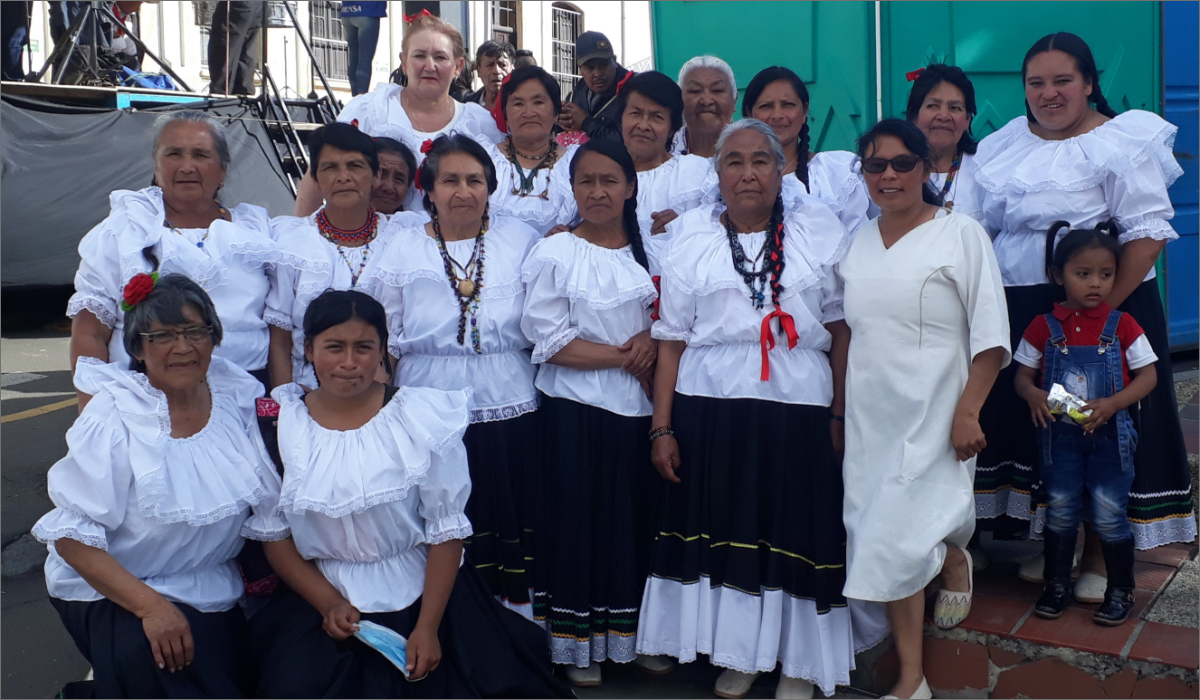
The group works in different activities such as: ancestral dance, ancestral folkloric dance of the highland Cundi-Boyacense, ritual dance, they practice and retake the craftsmanship of the community from which is hand-made and verbal-made. They do workshops about the traditional appropriation, supporting and influence of their traditions and customs and what is more important for them, a place for meeting again in order to make exchange of knowledge and transmission of wisdom, anecdotes, experiences and at least once by week create a change in the routine, a wish for them who have transformed and strengthened the community. It’s because of them and all alive and dead elders from our community that nowadays we are able to keep the culture and even ourselves alive through time as the great Comunidad Indigena Muisca de Bosa that we are.
Traditional Medicine
This process was born in the year 2008 with a group of leaders from Mhuysqa de Bosa community which with the support of SISPI project between SDS and ASCAI, found a place to carry out the ancestral medicine and midwifery assistance. Since then, we have been working in this process with and without resources from any entity. This group has worked away in order to maintain the group through the time and be able to help the community and humanity, because this is a service that is available for all people who require it, whether they are indigenous people or even non-indigenous people.
This process has been sustainable through time, people who are within this process, are people from the community that started a formation from what is ancestral, working in medicine. The Cusmuy has been our classroom where we perform several activities such as: meetings for expressing our voice (círculos de palabra), the purge, sharing of medicines with other communities, with Ozca, traditional medicine showers and cleanings up by different ways; owing to those things, in the community has grown the spirit of serving and helping, believing in the traditional medicine and carrying on the legacy left by our ancestors.
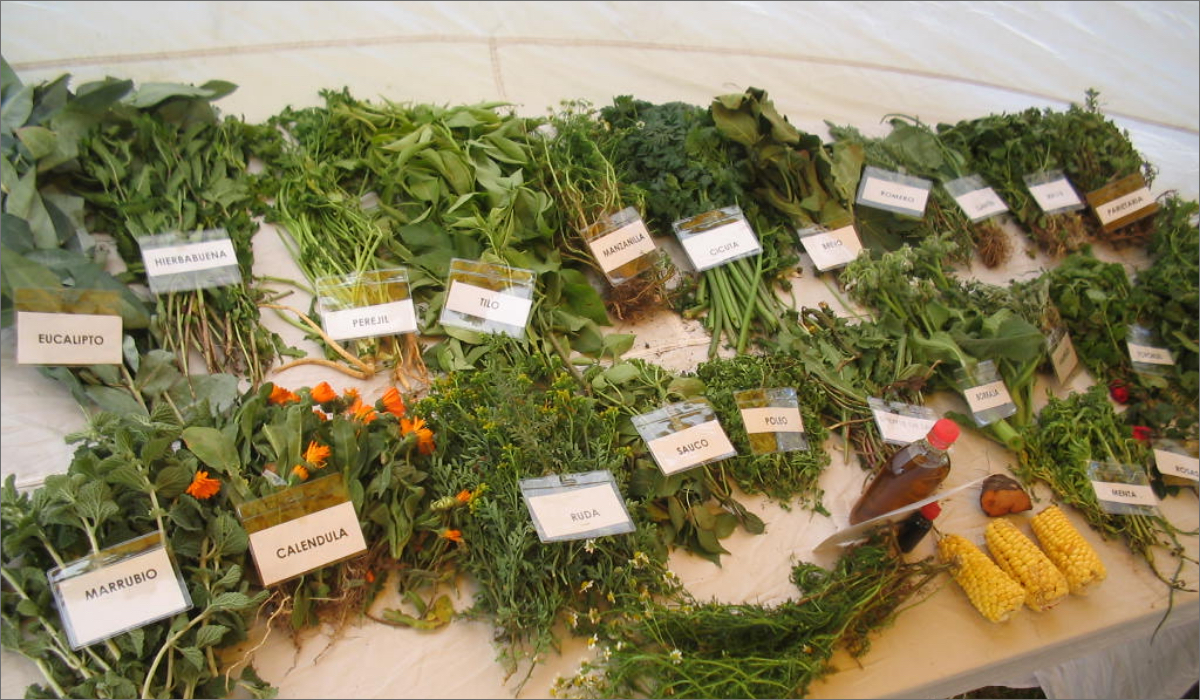
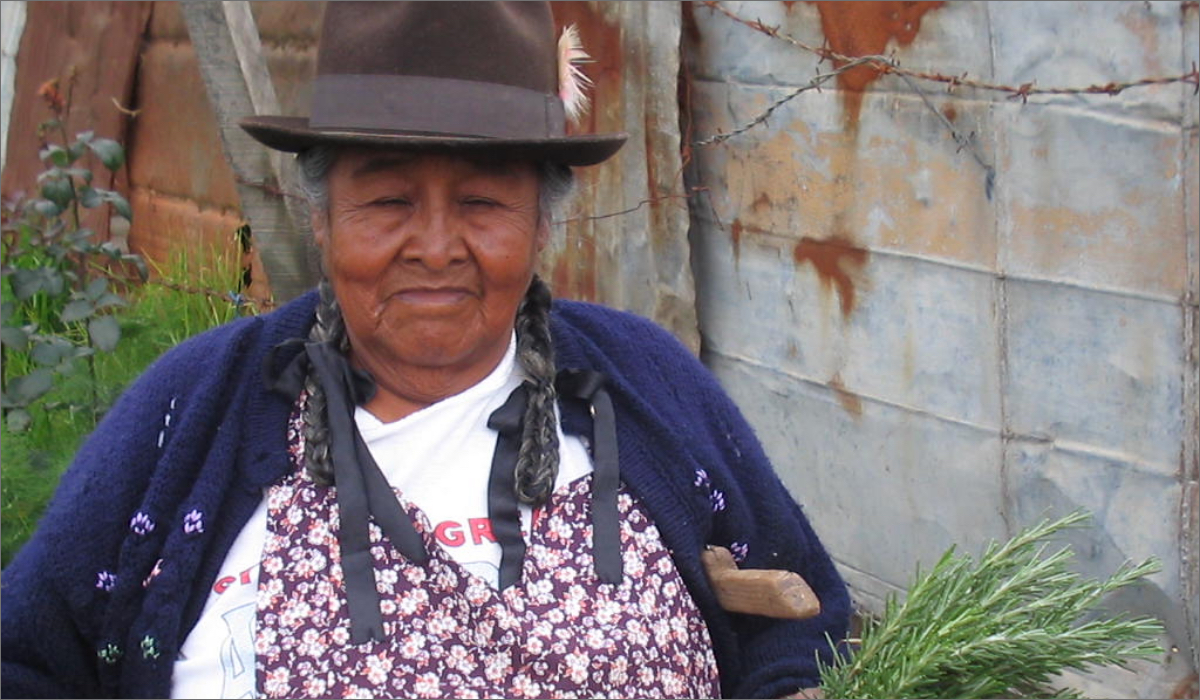
All the medicine group has done a formation process with elders from the community and from others communities. They have the knowledge and we put it in practice in different ways, but above all, we have the same purpose which is to heal, treat, purify and free people physically and spiritually. To achieve that, we use plants as a source to heal, we use them in different ways such as creams, unguents, traditional medicine showers, poultices, inhaled, medicinal irrigations, drinks, solutions, among others.
Furthermore, these medicines have been used to make massages, kneadings and traditional therapies. All this we accomplished, has been a significant emergence because this traditional medicine has enabled people to heal both physically and spiritually. In other words, to exemplify, ancestral medicine activities such as confessing, being honest with ourselves and with others too, recognizing each story and each walked through the life of each person, and all thanks to the ancestral medicine which is the guide, clean and healthy.
“Healing… is not just our bodies not hurting, there are things in the heart, mind and spirit that are heavy for people. There are some things that we carry within ourselves, even when the body is not expressing them, you know that they are right there in, and from which it is important to heal so, fortunately there is medicine to treat these issues. This comes from the tradition of various peoples, from the natural law. It’s fundamental to have a perfect harmony, a synchrony with the universe, with the nature of the superior beings, with grandparents, with the spirits, with the territory. We seek the formation of the being, because as people we already exist. The stories and myths are swearing, healing, law of the territory, of the places”.
- Solutions according to treatment.
- Sale of medicinal and ornamental plants.
- Sale of creams and unguents.
Dance
We are a traditional folk dance group formed since 2005 in the locality Bosa and composed mostly by people who belong to the Muisca de Bosa community. Indeed, It is framed within a process that focuses on looking into, illustrating and strengthening the community tradition through the dance which is a non-material heritage from the Muisca de Bosa indigenous community. Keeping in mind that dance has been a way of connection and body expression, therefore, plays a crucial role in the processes of community, familiar and individual formation.
We seek to pass down and express the importance of cultural traditions to new generations, promoting the cultural identity to the members, based on the development of formation processes over the Colombian folklore exploring, learning and creating a variety of choreographic performances inspired by three distinct visions: the ritual dance, the healing dance and the traditional dance.
On the other side, this group shows its work, participating actively in institutional events, both local and distrital which boosts the work consolidation, involving the engagement of people from different ages and genres. Based on dynamics of integration and community weave with various methodologies of sociocultural learning.
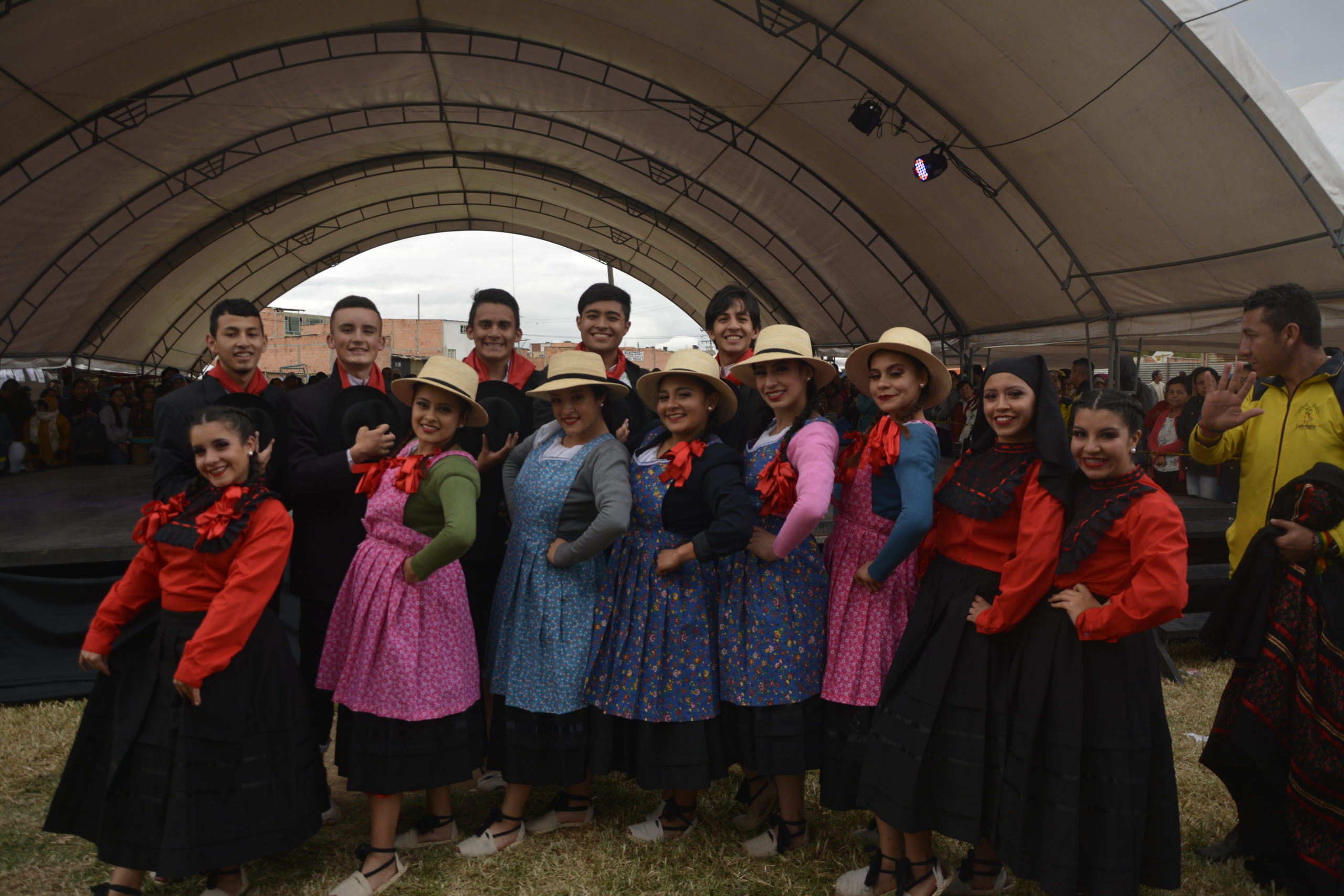
Ritual Dance: Al sol y luna.
Cundinamarca: Torbellino, carranga, merengue campesino, vuelta y vuelta.
Antioquia: Porro paisa, vueltas antioqueñas.
Nariño: Guaneña, Baile de mi sombrero, tiringuis tinguis.
Ecuador: Pasacalle, Capisca.
Bolivia: Cueca, huayno, fandango y San Juanito.
Argentina: Gato, Chotis.
Communications
The Mesa de Comunicaciones (Table of communications) of the Cabildo Indígena Muisca de Bosa was born owing to the necessity of optimizing the internal and external communication from the community, managing the various social media platforms and alternative communication channels.
The Mesa inherited elements which have been worked on by several comuneros (community members) throughout the history of the Cabildo. In various researching processes there has been elements evinced, which has been developed to the communication in the community. These are processes where people have tried to work together with virtuality but also with some more traditional communication processes that still continue operating like posters.
The process of communications accompanied by the Youth Council of the Cabildo started with a bulletin that for a short-term we delivered to the members in each assembly carried out. There thus, cultural pedagogical elements, myths from the Muisca folk, news about events in which the community had participated, among others, were confirmed in writing on those bulletins.
In this system an articulation was made with the Corporación Universitaria Minuto de Dios -UNIMINUTO- regional Soacha. Hence, It was opened a call aimed at, above all, young people from the community who were interested and engaged in formation about communication processes, delivering as a result the Web Interactive Documental Hybha Mhuysqa (Muisca blood). Consequently, it meant a lean as the big cheese in how the communication within the community had been managed. This brought about the beginning of the technical formation in communications and audiovisual processes by some young people from the community who have already been in previous processes of communication. Finally, It also left an advance and laid the groundwork for future initiatives within the Cabildo Indígena Muisca de Bosa regarding the same matter.
Nowadays the Cabildo has various communication channels, thanks to the process made by the Mesa de Comunicaciones, the new initiatives that supported it, the diagnostics and also investigations about the traditional and modern ways of communicating the information. Among the communication channels are those that have been used through the years, as well as, social media, supportings and media, information spreading networks via virtual groups, and so on.
The Mesa de comunicaciones formed in the last years aim to overcome the communication barriers within the community and blend the technology developments, just like keeping a close relationship with the traditional ways that the community has used for generations.

Cabildo Indígena Muisca de Bosa
Copyright © 2020 Todos los derechos reservados

